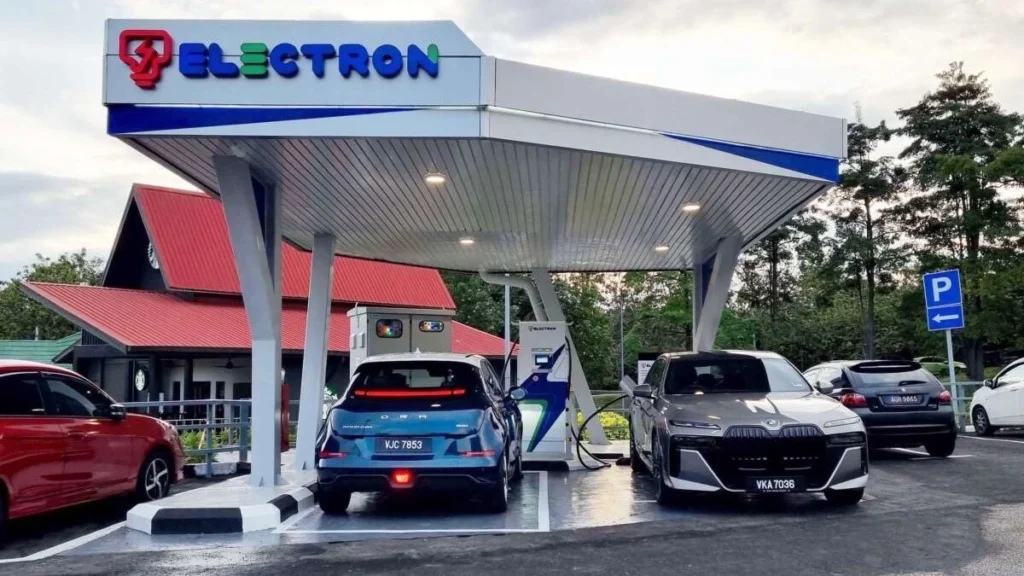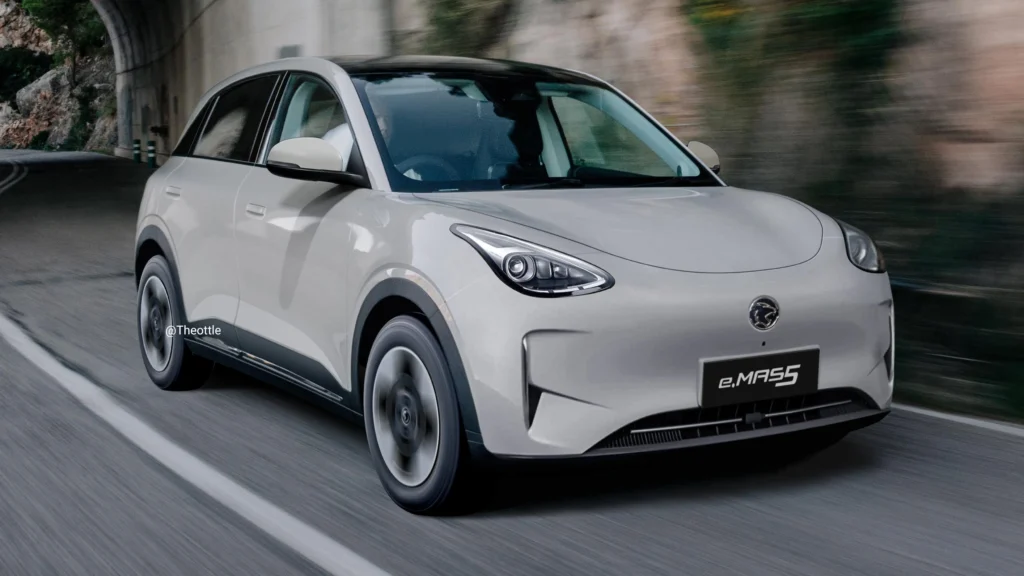Electric vehicles (EVs) are taking hold in Malaysia thanks to incentives, better technology, and a growing charging network. Still, many myths and rumours linger. Misconceptions about range, charging, cost, performance, and maintenance continue to make some buyers hesitate.
This article clears the air. It examines the most common EV myths in Malaysia with facts based on current data and policies. By the end, you will have a clearer view of how EVs fit into everyday Malaysian life.
- Myth 1: EVs Have Limited Range and Cause Range Anxiety
- Myth 2: EV Charging Takes Too Long
- Myth 3: EVs Are Too Expensive
- Myth 4: EV Batteries Do Not Last and Harm the Environment
- Myth 5: EVs Are Not Powerful or Fun to Drive
- Myth 6: EVs Only Charge at Home
- Myth 7: EVs Cannot Handle Malaysia’s Tropical Heat
- Myth 8: EV Maintenance Is Complex and Costly
- Conclusion: Malaysia’s EV Future Is Bright
Myth 1: EVs Have Limited Range and Cause Range Anxiety
Range anxiety, or the fear of running out of battery before reaching a charger, is often cited by drivers. However, modern EVs deliver ranges that cover most Malaysian driving needs. Popular models like the Tesla Model 3, BYD Atto 3, and Hyundai Ioniq 6 can travel 400–500 km per charge even in Malaysia’s tropical climate.
For urban users in Kuala Lumpur, Penang, or Johor Bahru, this far exceeds typical daily mileage. Long-distance drivers benefit from a growing network of public chargers. Malaysia now has over 3,300 charging points, with plans to hit 10,000 by the end 2025. Fast chargers are installed along highways through Gentari, ChargEV, JomCharge, and other networks. Apps like PlugShare and ParkEasy help locate and reserve chargers in real time.
With most EV owners charging at home or work, range anxiety is becoming more of a perception issue than a practical concern.
Myth 2: EV Charging Takes Too Long
Another misconception is that EVs take too long to charge. While you cannot refill an EV as quickly as a petrol tank, the comparison overlooks how EVs are used. Charging usually happens when the car is parked, such as overnight at home or during working hours.
Home AC chargers with 7–11 kW power deliver a full charge overnight. Public AC chargers in shopping malls or offices are convenient for top-ups if you are spending a few hours there. Did you know that most cars only take up to 5-6 hours to fully charge via AC? That is easily covered by a overnight or 9-5 charge! DC fast chargers now available at petrol stations and highway rest stops can charge most EVs from 10% to 80% in 30 to 60 minutes.
Government policy supports the expansion of these fast chargers, especially on major highways. A tax relief of up to RM2,500 for home charger installations helps make private charging affordable. With smart planning, Malaysian EV owners seldom face downtime waiting for a charge.
Myth 3: EVs Are Too Expensive
Price concerns are valid, but they are changing quickly. Import and excise duty exemptions until 2025 for fully imported EVs and until 2027 for locally assembled EVs significantly reduce prices. Road tax exemptions add further savings.
Recent price cuts are making EVs competitive. For example, the BYD Atto 3 Ultra costs RM123,800 with an eight-year free service package. Proton and Perodua have announced plans to launch affordable EVs in the coming years, increasing local options. The Proton eMAS 5 is rumoured to cost around the RM80-100K mark, making it an affordable EV for the masses. And the Perodua eMO-II is also expected to cost in that price bracket. We could soon see a low-cost EV price war on our hands between the two local brands, which only means lower prices for us consumers!
EVs also cost less to run. They have fewer moving parts, which means lower maintenance costs, and charging is cheaper than petrol. Many owners save thousands annually on fuel and servicing. When considering total ownership costs, EVs can be as affordable, or cheaper, than petrol alternatives.
Myth 4: EV Batteries Do Not Last and Harm the Environment
Some believe EV batteries degrade quickly and create waste problems. Modern EV batteries come with eight-year or 160,000 km warranties. Data shows they retain most of their capacity well beyond the warranty period.
Malaysia has begun addressing battery recycling. MARii and licensed facilities manage battery disposal and reuse. New battery passport programs will improve tracking and lifecycle management.
Even accounting for Malaysia’s current energy mix, EVs produce fewer lifetime emissions compared to petrol cars. As renewable energy grows, their environmental benefits will increase further.
Myth 5: EVs Are Not Powerful or Fun to Drive
Another myth is that EVs lack performance. Electric motors produce instant torque, making them quick off the line. Models like the Tesla Model Y and Hyundai Ioniq 5 go from 0–100 km/h in under six seconds. Even the Geely Xingyuan (the Geely model which the Proton eMAS 5 will be based off) will be able to do 0 to 100 km/h in 9.9 seconds.
Low centers of gravity improve stability and handling. EVs handle Malaysian traffic and road conditions well, providing a smooth and quiet ride.
Myth 6: EVs Only Charge at Home
Some Malaysians assume EVs rely on home charging alone. While home charging is convenient, public charging networks are expanding quickly.
As of 2025, Malaysia has thousands of chargers nationwide. Networks like Gentari, ChargEV, JomCharge, and ChargeSini have installed chargers in malls, hotels, office towers, and rest stops. Highways now feature fast chargers to support long-distance trips, including balik kampung journeys. Our Ultimate Guide to EV Charging covers this topic in detail.
Apps like JomCharge and PlugShare let drivers locate, check availability, and plan charging stops. Public charging is no longer rare; it is part of the growing EV ecosystem.
Myth 7: EVs Cannot Handle Malaysia’s Tropical Heat
Malaysia’s heat and humidity raise concerns about battery performance. Modern EVs are designed for varied climates. Thermal management systems regulate battery temperature to maintain performance and safety even in high heat. There are even some studies that state the optimal temperature for EV batteries are between 15°C to 35°C, which we experience on the daily.
Thousands of EVs already operate in Malaysia without heat-related failures. Manufacturers test batteries in extreme conditions, including tropical climates. Owners report consistent performance during hot weather and long trips. With proper engineering, Malaysia’s climate does not pose a barrier to EV adoption.
Myth 8: EV Maintenance Is Complex and Costly
EVs require less maintenance than petrol cars. They lack components like gearboxes, exhaust systems, and oil filters. With fewer fluids and moving parts, there is less that can fail.
Routine maintenance involves brake checks, tire rotations, and software updates. Many Malaysian EVs come with service packages that reduce costs further. The regenerative braking systems common in EVs also extend brake pad life.
Owners often find servicing cheaper and less frequent than with petrol cars. Just take a look at the maintenance schedule for the Proton eMAS 7, totaling only RM 2,959 across 10 years! Compare that to the RM 4000 over only just 5 years for the Proton X70. EV maintenance myths stem from unfamiliarity, not reality.
Conclusion: Malaysia’s EV Future Is Bright
Electric vehicles are no longer experimental. Government incentives, expanding infrastructure, and strong product offerings make them a viable choice today. Myths about range, charging, cost, performance, heat, and maintenance do not reflect the reality on Malaysian roads.
As more Malaysians see EVs in action, misconceptions will fade. For those considering a new car, now is the time to explore EV ownership. The facts show EVs are practical, affordable, and ready for Malaysia’s roads.


